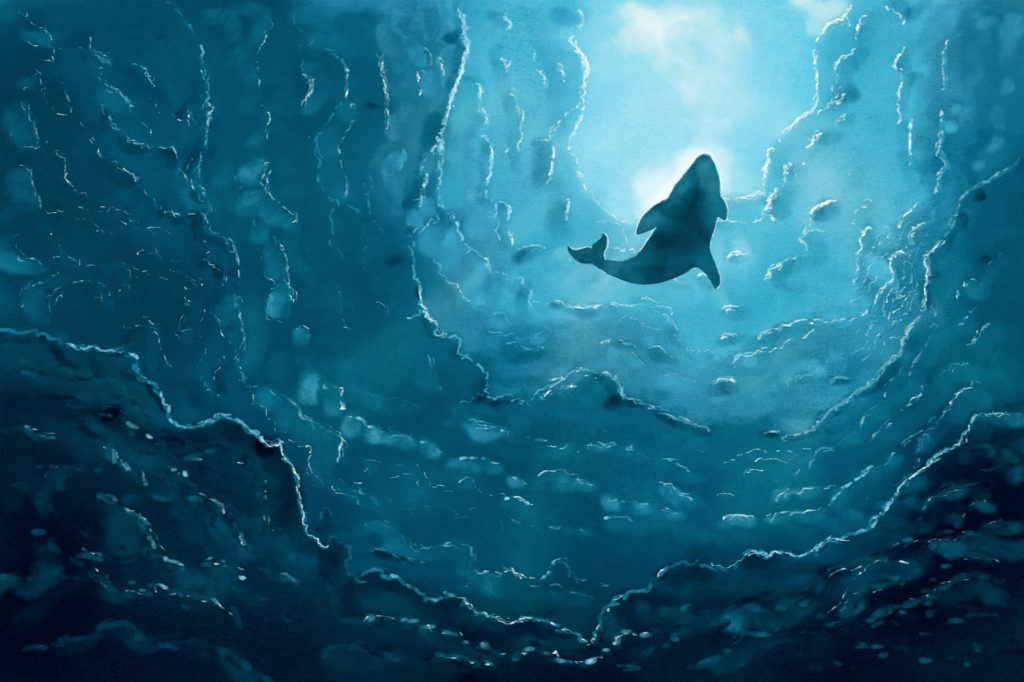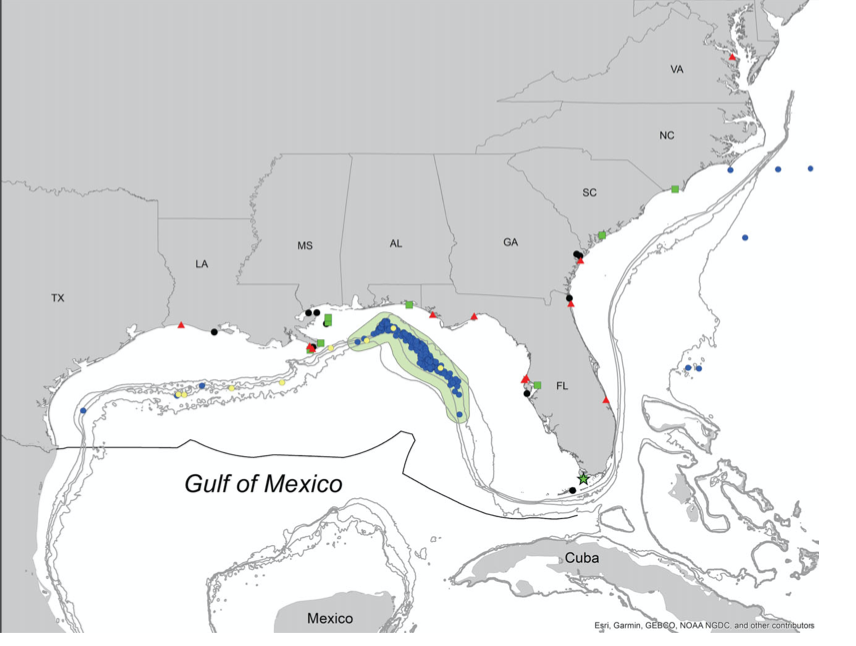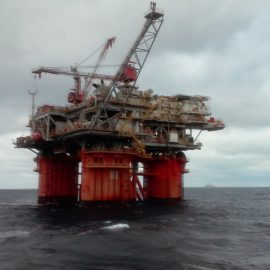
A rare whale that only lives in the Gulf died and washed up in the Florida Everglades. The cause of death – industry.
An exceedingly rare and mysterious whale species recently found to live only in the Gulf of Mexico faces big threats from some big industries. But it wasn’t a cargo ship or an oil spill that killed the only Rice’s whale scientists have been able to study up close. It was done in by a tiny piece of trash. The 38-foot-long male that washed up on Sandy Key near the Florida Everglades in 2019 was found to have been killed by a jagged piece of plastic that became lodged in its belly. The rigid, 2½-inch-long shard sliced up the whale’s insides, causing internal bleeding and portions of its stomach to suffer necrosis, meaning the organ essentially died before the whale did, according to a recent study by the National Oceanic and Atmospheric Administration.
nola.com
Only recently been found to be a new species the Rice’s Whale is endangered already with only 30-50 believed to exist.
Losing just one is a big setback for its recovery. “I really worry for this unique animal,” said Kim Warner, a marine pollution scientist for the nonprofit group Oceana. “Its prognosis doesn’t look good.” The whale is at risk from ship strikes, oil spills and the increasingly heavy use of deep-penetration seismic blasts to search for oil and gas deposits at the Gulf’s bottom. It seemed inevitable that the Gulf’s growing plastic problem would also take a toll. “The Gulf of Mexico is one of the most plastic-polluted bodies of water there is,” said Warner, referencing a 2017 LSU study that found plastic fragments in every water sample taken from the Gulf. “It’s surrounded by land, it has all these inputs from rivers, and [the region] is a big plastics producer. It just has a tremendous amount of plastic, and it’s harming a lot of species.” Especially hard-hit are endangered animals such as the Rice’s whale. According to a study Warner led last year, the vast majority of the animals found to have been injured or killed by plastic waste in the Gulf were threatened or endangered species, including sea turtles and manatees.

The necropsy of the Rice’s whale that washed up in Florida indicates its stomach injuries prevented the otherwise healthy animal from eating or digesting food. Its death was likely long and quite painful. “The whale was thin and [had] no other infections or pathogens that could be attributed to its death,” NOAA scientist Patricia Rosel said. Besides the plastic, “it’s stomach was empty.” Finding anything in the whale’s belly would have been a major scientific discovery. The Rice’s whale diet is one of the many basic details about the animal that continue to confound scientists. They know it dives deep to feed, but what it eats is anybody’s guess. Until a few months ago, Rice’s whales were thought to be Bryde’s whales, an endangered baleen whale that ranges around the Atlantic and Pacific oceans. But the whale in Florida offered a bonanza of new information, including a close look at its organs, skeleton and DNA, and confirmation of what Rosel and other scientists had long suspected: the Bryde’s-like whales in the Gulf are a distinct species. They’re similar to Bryde’s but they stick to the Gulf, appear to feed in deeper water and have some small but important physical differences. Rosel made her findings official in a study published early this year in the journal Marine Mammal Science.
The Bryde’s Whale is protected under the Endangered Species Act and now the Rice’s Whale will receive the same protections as well as under the Marine Mammal Protection Act. The whale is named after Dale Rice who recognized the whale over 60 years ago. Deepwater Horizon killed off roughly 17% of the whales and caused health problems that terminated about a quarter of the pregnancies.
A newer threat are the seismic air guns that oil and gas companies are increasingly relying on to find overlooked fossil fuel deposits in the Gulf. The air gun blasts can disorient, injure or kill various marine animals. In its final weeks, President Donald Trump’s administration eased rules that have for almost a decade limited air gun use in the Gulf. The changes will cause harm or harass the entire Rice’s whale population, according to a NOAA analysis of the new rules. The profile of the Gulf’s plastic problem was raised when a cargo ship moored in New Orleans spilled millions of plastic pellets, called ‘nurdles,’ into the Mississippi River last summer. Most of the nurdles embedded in riverbanks or flowed to the Gulf. Citing the spill, the New Orleans City Council on Thursday unanimously approved a resolution expressing opposition to a massive Formosa Plastics plant set to take shape about 50 miles upriver in St. James Parish. The Taiwanese company has been a chronic nurdle polluter on the Texas coast. Formosa agreed to pay $50 million after a judge found in 2019 that the company’s plant in Port Comfort, south of Houston, had illegally dumped billions of nurdles into bays and other waterways. “The increasing plastic production in the Gulf [and] all the single-use plastic rushing down the Mississippi River is endangering so many species,” Warner said. “I hope the community can rally and reduce all this waste. Maybe they can give this whale – this rare animal that lives in just one specific place – a fighting chance.”
There have been many related stories on this problem as it encompasses a variety of problems in our environment.




Pingback:Rice’s Whale to be Protected at Sea – Greater New Orleans Interfaith Climate Coalition